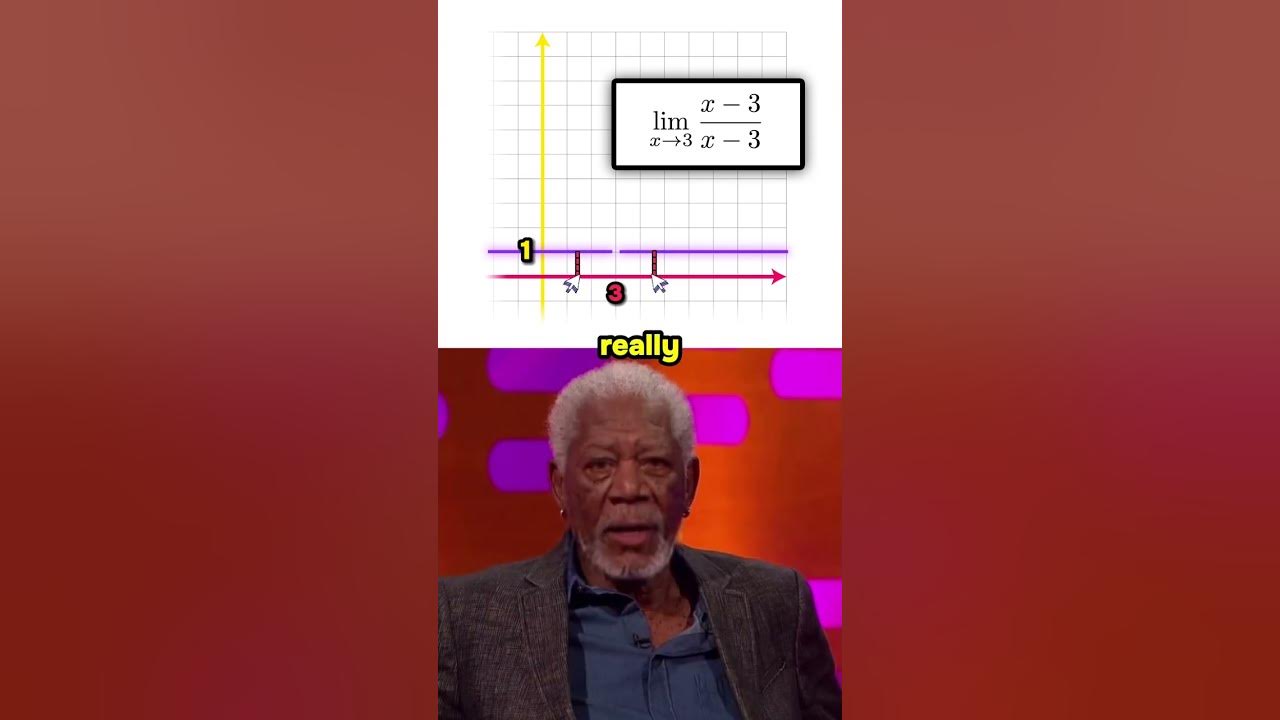Limit Kalkulus Part 1: Apa Itu Limit? Penjelasan Mudah & Visual!
Summary
TLDRThis video introduces the concept of limits in calculus, explaining how limits describe a function approaching a specific value without necessarily reaching it. The video covers the basic definition, mathematical notation, and common methods for finding limits, including substitution, factoring, and rationalizing. Using examples, the video demonstrates how limits are calculated, even in cases of indeterminate forms like 0/0. It also explains properties of function limits and provides practical exercises to reinforce learning, setting the stage for more advanced topics in future videos.
Takeaways
- 😀 Limit in calculus refers to something that approaches a certain value but cannot be reached exactly.
- 😀 The limit is useful when a function is undefined at a particular point, but its behavior near that point can be described.
- 😀 Mathematical notation for a limit is written as 'lim(x -> a) f(x) = l', meaning as x approaches a, f(x) approaches l.
- 😀 Limits can be approached from two sides—left and right—and both must match for a limit to exist.
- 😀 An example function f(x) = (x² - 1) / (x - 1) demonstrates how limits work, showing indeterminate forms like 0/0 that can be resolved through factoring.
- 😀 Factoring helps to eliminate indeterminate forms, as seen when the numerator of f(x) is factored and simplified to cancel out terms.
- 😀 When approaching a limit from both sides, values can be very close but may never exactly equal the limit, as demonstrated by the example approaching 1.
- 😀 Three main methods to find limits include substitution (for non-0/0 forms), factoring (for 0/0 forms), and multiplying by conjugates for root forms.
- 😀 Properties of limits include the ability to add, subtract, multiply, and divide limits of functions, as long as the denominator is not zero.
- 😀 Examples are provided to illustrate how to calculate limits, using simple operations like substitution, factoring, and rationalization to handle different forms of limits.
Q & A
What does the term 'limit' mean in mathematics?
-In mathematics, a limit refers to the value that a function approaches as the input gets closer to a certain point. It describes how a function behaves near a particular value, even if it's undefined at that point.
Why do we need to use limits for functions that are undefined at certain points?
-Limits are used to find the value a function approaches as the input gets closer to a specific point, even if the function itself is undefined at that point. This allows us to analyze the behavior of the function without directly evaluating it at the undefined point.
How is a limit expressed in mathematical notation?
-A limit is written as 'lim (x → a) f(x) = l', where x approaches a, and the function f(x) approaches a value l. This means that as x gets closer to a (but is not equal to a), the value of f(x) gets closer to l.
What does it mean if a function has a hole at a particular point?
-A hole in a function occurs when the function is undefined at a certain point, but the limit from both the left and right sides still approaches a finite value. This means the function does not have a defined value at that point but behaves in a predictable way as x approaches it.
How can you determine the limit of a function using a table?
-To determine the limit of a function using a table, you substitute values that get closer and closer to the point of interest (from both the left and right sides). As these values approach the point, you observe if the function approaches a specific number.
What are the three common methods to find the limit of a function?
-The three common methods to find the limit of a function are: 1) Substitution, when the form is not 0/0; 2) Factoring, which is used when the form is 0/0; and 3) Multiplying by the conjugate, which is used for functions involving roots.
What happens when you encounter an indeterminate form like 0/0?
-When you encounter an indeterminate form like 0/0, it means the limit cannot be directly evaluated. In this case, you must use techniques like factoring or multiplying by the conjugate to simplify the expression and resolve the indeterminate form.
How do you apply factoring to find the limit of a function?
-To apply factoring, you factor the numerator and denominator of the function to simplify the expression. If terms cancel out, you can then substitute the value into the simplified function to find the limit.
What is the process for rationalizing a root form when finding a limit?
-When dealing with a root form, you rationalize the expression by multiplying both the numerator and denominator by the conjugate of the expression. This allows the roots to cancel out, simplifying the expression and making it possible to evaluate the limit.
What are the main properties of limits that are useful for simplifying limit problems?
-The main properties of limits are: 1) The limit of a sum is the sum of the limits. 2) The limit of a product can be separated. 3) For division, the limits of the numerator and denominator can be separated, with the condition that the denominator is not zero. 4) Constants can be factored out of the limit.
Outlines

Dieser Bereich ist nur für Premium-Benutzer verfügbar. Bitte führen Sie ein Upgrade durch, um auf diesen Abschnitt zuzugreifen.
Upgrade durchführenMindmap

Dieser Bereich ist nur für Premium-Benutzer verfügbar. Bitte führen Sie ein Upgrade durch, um auf diesen Abschnitt zuzugreifen.
Upgrade durchführenKeywords

Dieser Bereich ist nur für Premium-Benutzer verfügbar. Bitte führen Sie ein Upgrade durch, um auf diesen Abschnitt zuzugreifen.
Upgrade durchführenHighlights

Dieser Bereich ist nur für Premium-Benutzer verfügbar. Bitte führen Sie ein Upgrade durch, um auf diesen Abschnitt zuzugreifen.
Upgrade durchführenTranscripts

Dieser Bereich ist nur für Premium-Benutzer verfügbar. Bitte führen Sie ein Upgrade durch, um auf diesen Abschnitt zuzugreifen.
Upgrade durchführenWeitere ähnliche Videos ansehen

Edging in Math - Morgan Freeman and Jake Paul explain taking Limits

Eps.8 KALKULUS 1: Limit - Pendahuluan Limit

Limit of a Function using a Graph - Basic/Differential Calculus

Introduction to Limits (NancyPi)

Cálculo: Introdução e Noção Intuitiva de Limites (Aula 1 de 15)

Limits, L'Hôpital's rule, and epsilon delta definitions | Chapter 7, Essence of calculus
5.0 / 5 (0 votes)
